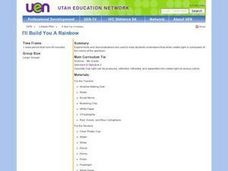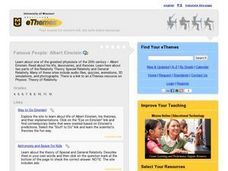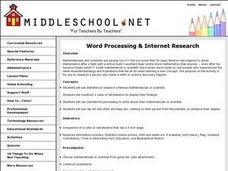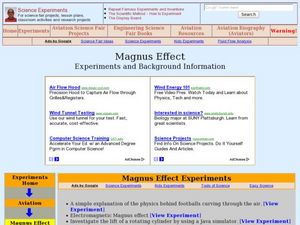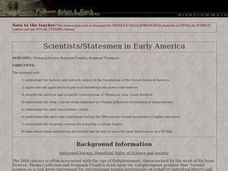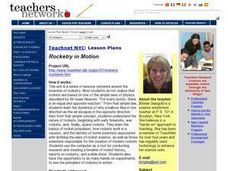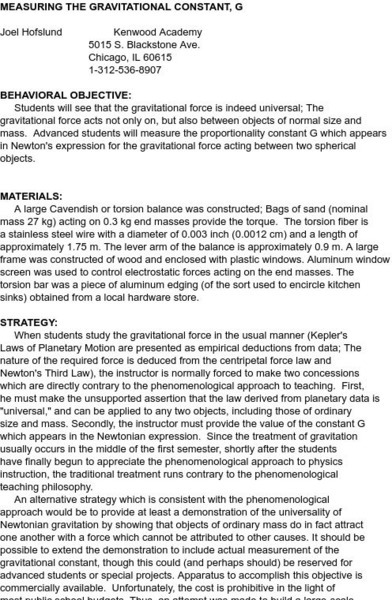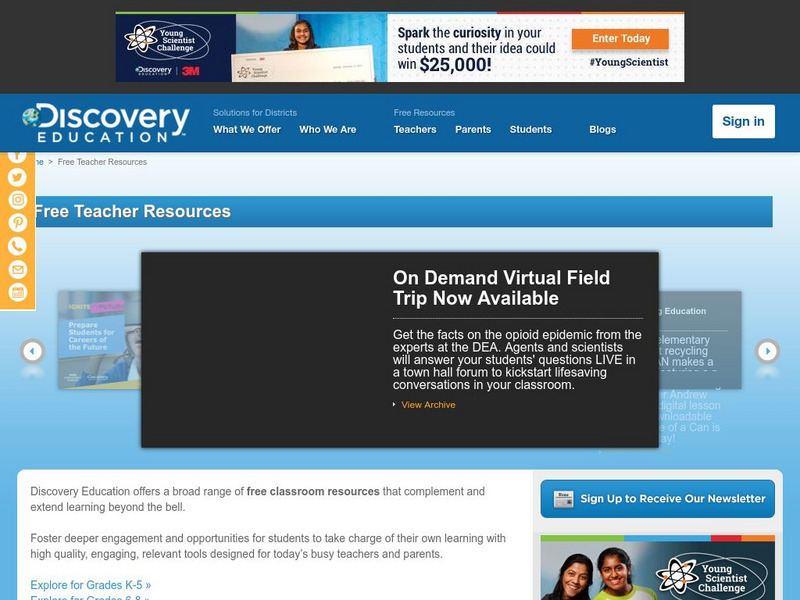Curated OER
I'll Build You A Rainbow
Sixth graders conduct a variety of experiments to explore types of light and the concept of refraction. They observe objects in water, use water and prisms to create rainbows and combine light filtered through colored cellophane to...
Curated OER
Lasers Saving Sight
Students review some basic biology by talking about how the eye works. They cover the concepts behind laser surgery as a treatment for saving sight. They begin to recognize the overlap of disciplines (physics and biology) required for...
Curated OER
Understanding Light: Lesson 2 - The Electromagnetic Spectrum
Students investigate the Electromagnetic Spectrum and realize there is energy beyond visible light. They identify parts of the EM Spectrum.
Curated OER
Famous People: Albert Einstein
Students research Albert Einstein and the two parts of the Relativity Theory.
Curated OER
Happy Birthday Mathematicians and Me
Students choose a mathematician or scientist born on the same day as the student and research them. They create a cube or tetrahedron and place required information on the sides (such as birth year, death yr., greatest contribution to...
Curated OER
Force and Motion - Part 2
Students test different objects such as dominoes, marshmallows, slides, and more to test their force, motion, gravity, friction, and the concept of matter. In this force and motion lesson plan, students understand that the force an...
Curated OER
Magnus Effect
Students examine the Magnus effect and its history. In this forces lesson students investigate the lift of a rotating cylinder.
Curated OER
Video On Integration And Quiz On Induction
Young scholars engage in a lesson plan that is concerned with the concepts of integration and induction. They view a video about integration and take a quiz on induction. Students use the resource links to view information added to the...
Curated OER
Scientists and Statesmen in Early America
Explore the historic and cultural context of the foundations of the United States of America. They identify the political and scientific contributions of early American scientists.
Curated OER
Simple Machines/Technology
Third graders examine the concept of work as the movement of an object through a distance. They define gravity and determine what type of work is caused by gravity. They measure how far an object is moved by a force. They make a...
Curated OER
Scientists at Work: What'll they think of next?
Learners explore scientific discovery while watching a video. They, in groups, are to research a scientific invention and present their findings to the class.
Curated OER
Learning About the Shape of the Earth
Seventh graders investigate ways of telling the shape of the Earth and its position in the Universe both historically and today.
Curated OER
Objects as Self
Students examine how objects and setting help complete a self-portrait. They analyze Franklin's self-portraits before creating their own. They try to create the self-portrait as if they were in Franklin's time.
Curated OER
Rocketry in Motion
Students investigate why a balloon flies in one direction as air escapes in the opposite direction, which helps them understand the nature of rockets and fireworks. Individually and in teams, students conduct research to create a...
Curated OER
Where Will It Go?
Students predict the path of a ball bouncing off an object. In this physics activity, students conduct the rolling ball experiment to test their prediction. They perform several trials for accuracy.
PBS
Pbs Learning Media: Newton's Triple Play: Baseball Science
In this lesson, middle schoolers watch a video and animations that relate Isaac Newton's three laws of motion to baseball and apply what they've learned about these laws to another sport or other real-life situation. It includes...
Alabama Learning Exchange
Alex: Isaac Newton
During this lesson, students have the opportunity to explore the life of Isaac Newton. Students use reference books and the Internet to investigate Newton's life. Following group discussion and individual research, students create a...
Science Education Resource Center at Carleton College
Serc: Newton's 2nd Law: Inquiry Approach
In this activity, students test Isaac Newton's ideas on the nature of motion, in particular his 2nd Law. The emphasis is on the process of science, investigation, and experimentation, not the results. Students must come up with their own...
TeachEngineering
Teach Engineering: May the Force Be With You: Thrust
In this lesson, students will study how propellers and jet turbines generate thrust. This lesson focuses on Isaac Newton's 3rd Law of Motion, which states that for every action there is an equal and opposite reaction.
Science and Mathematics Initiative for Learning Enhancement (SMILE)
Smile: Measuring the Gravitational Constant, G
A demonstration/lab idea for determining the numerical value of the universal gravitation constant using a torsion balance.
Discovery Education
Discovery Education: Physical Science: Gravity Gets You Down
In this lesson, students make predictions about falling objects of different sizes and masses to learn about gravity and air resistance. Includes audio vocabulary list and extension activities.
TeachEngineering
Teach Engineering: How Do Things Fall?
Students learn more about forces by examining the force of gravitational attraction. They observe how objects fall and measure the force of gravitational attraction upon objects.
University of Houston
University of Houston: Lesson Plan: Famous Mathematicians
This lesson plan is aimed at 7th and 8th grade students and involves researching famous mathematicians and the import of their contributions.
Other popular searches
- Isaac Newton
- Sir Isaac Newton
- Isaac Newton Power Point
- Isaac Newton 2nd Law
- Isaac Newton and Gravity
- Isaac Newton Gravity
- Education of Isaac Newton
- Isaac Newton Research
- Isaac Newton Vocabulary
- Pics of Isaac Newton
- Pods of Isaac Newton
- Sir Isaac Newton Apples


